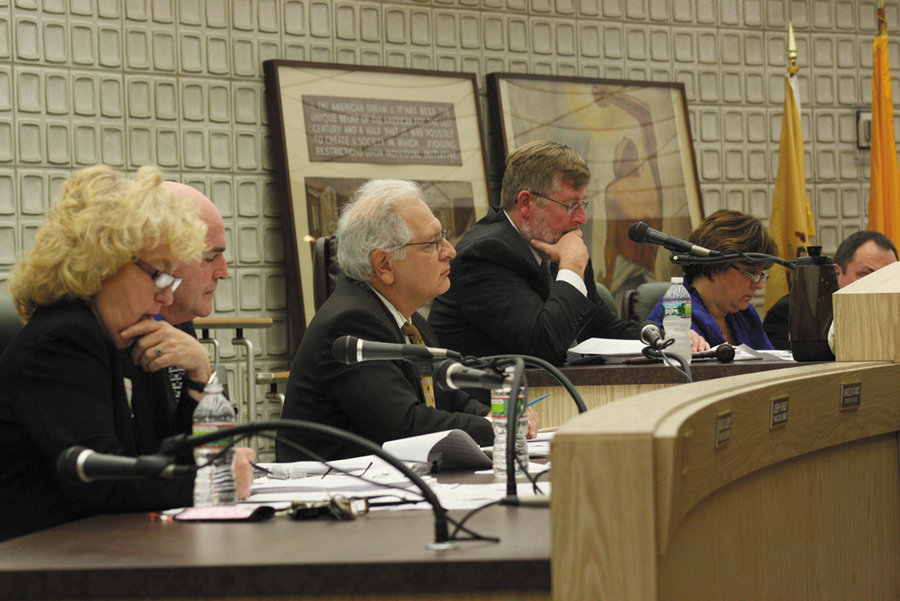After discussions with a number of local and regional animal rights groups, the City Council decided at its Oct. 19 meeting to cancel a proposed pilot program that would have authorized a limited number of caregivers for dealing with the city’s out of control feral cat population.
Business Administrator Steve Gallo said the city came to an understanding with the animal rights’ groups that the ordinance as originally proposed had the potential to hinder individuals in the community who are currently working to control feral cat populations. The ordinance, which was taken off the agenda, would have allowed only three caregivers in the city – far too few to deal with the current population of cats, animal rights people said, and it could have imposed fines on people who are currently trying to trap, neuter, and release feral cats.
“This ordinance would not alleviate feral cat populations, and it is in the best interest of the city to withdraw it.” — Adelaide Laurie
____________
Gallo said he believed the city had drafted a good ordinance that took into consideration the animals, as well as people living near existing cat colonies, and that the city had moved ahead with a pilot program to see if the trap, neuter, and release program would deal with the issue of overpopulation.
“We were surprised to learn that trap, neuter, and release programs were already being employed by a number of groups in the city, and being employed successfully,” Gallo said. “What we learned from discussions with the animal advocacy groups is that the ordinance would have the opposite effect from the mission that advocates were trying to accomplish – that is to manage these feral cat colonies.”
Gallo said it is the goal of the city to work with recognized animal advocacy groups to help manage these populations.
Among the handful of speakers was Adelaide Laurie, president of the Hudson County Animal League, who supported the withdrawal of the ordinance.
“This ordinance would not alleviate feral cat populations, and it is in the best interest of the city to withdraw it,” she said. “We know that we will work with the city to find a solution that will not harm the cats. We realize that the feral cat population is a great concern for the city. We recognize that the city has a better understanding of the TNR program, and by working together, we will be able to come to an agreement about a program that will work not only for the feral cats, but for the citizens of Bayonne.”
Michele Lerner, who is an attorney for the Animal Protection League of New Jersey, said that of the 140 municipalities state wide that have TNR programs, only about 40 have passed ordinances. She said the Bayonne ordinance as drafted would have been counter productive to efforts to reduce the feral cat population.
She said the ordinance limited managers of feral cat colonies to three, where there are already more than that in the city, and that the ordinance would have imposed fines on people working to control the population. In addition, the ordinance did not have a single entity that oversaw all the efforts in the city, something critical to allowing the program to work.
Gallo said the city will now work with these groups, allowing management of the colonies in exchange for data on the overall cat population and other information the city needs to help deal with the problem.
Rent control residents protected
At the same meeting, the City Council voted to introduce a new rent control ordinance that would eventually do away with rent control in the city, but would not affect people who are currently living in rent controlled residences.
Earlier this year, the council tried to pass a modified rent control ordinance that would allow property owners to opt out of rent control if they made city-approved improvements to their properties. Under protest from tenants of rent controlled apartments, the city withdrew the ordinance. The city is required to renew the ordinance yearly, but technically, withdrawing the ordinance earlier this year left the city without rent control protection. The new ordinance, however, will be retroactive to July 1.
Under the new ordinance, said City Attorney Charles D’Amico, apartments would lose their rent control status once the current residents move out.
Bayonne is one of less than 100 municipalities nationwide that still retains rent control – which limits the ability of landlords to raise rents even when what they are charging is vastly below market rates. The rent in such apartments is not based on the income of the tenants the way affordable housing units would be in buildings, such as those operated by the Bayonne Housing Authority.
“People who are living in rent control apartments will continue to be protected by rent control,” D’Amico said. “But once they move out, the apartments will no longer be governed by rent control.”
Al Sullivan may be reached at asullivan@hudsonreporter.com.
